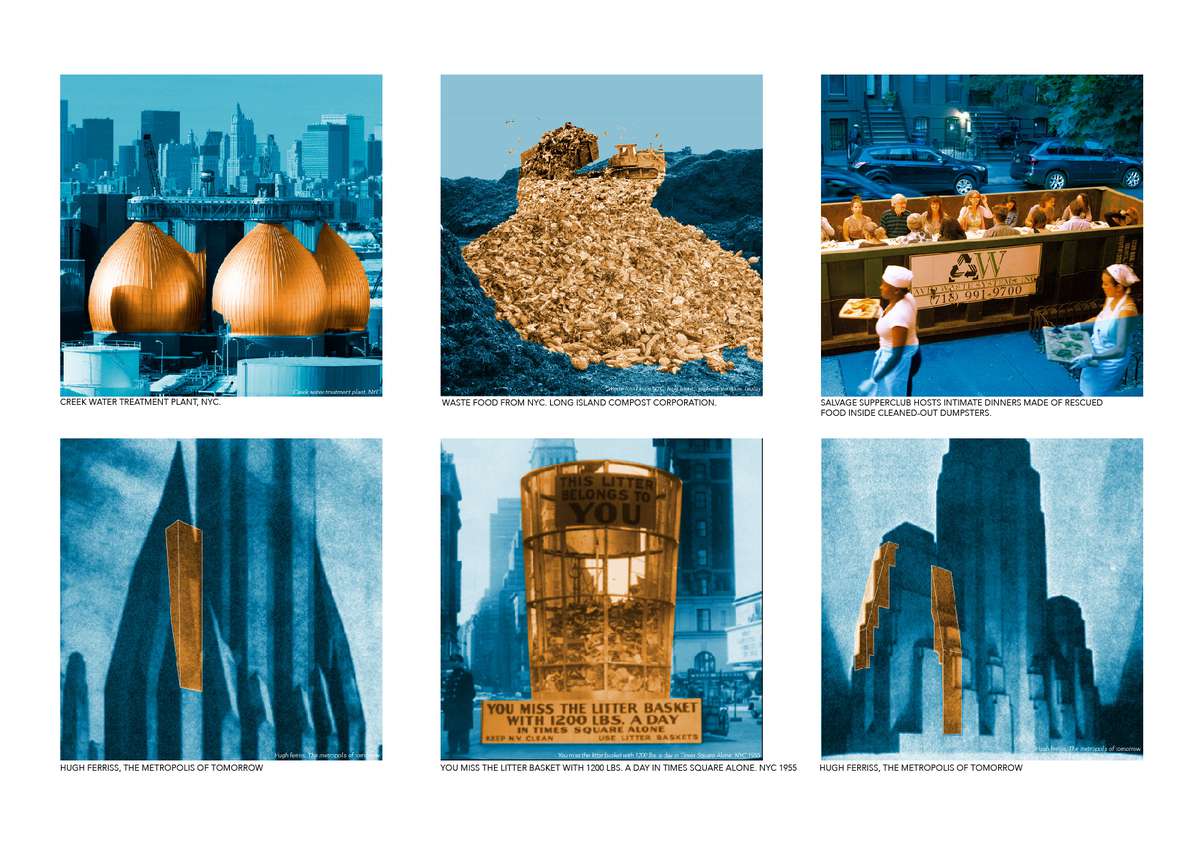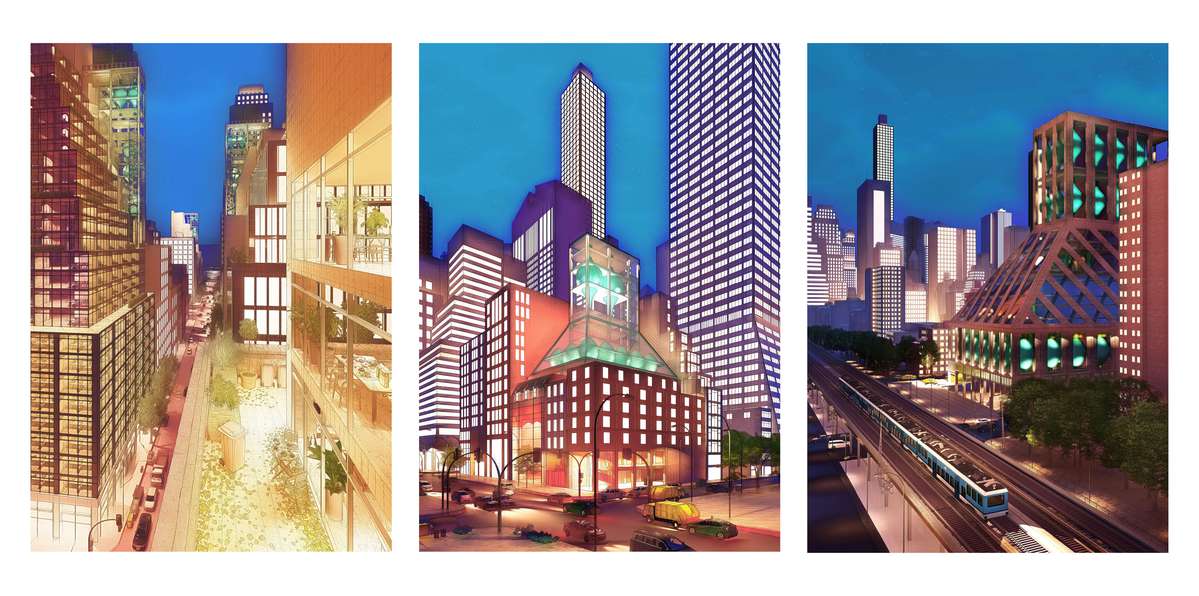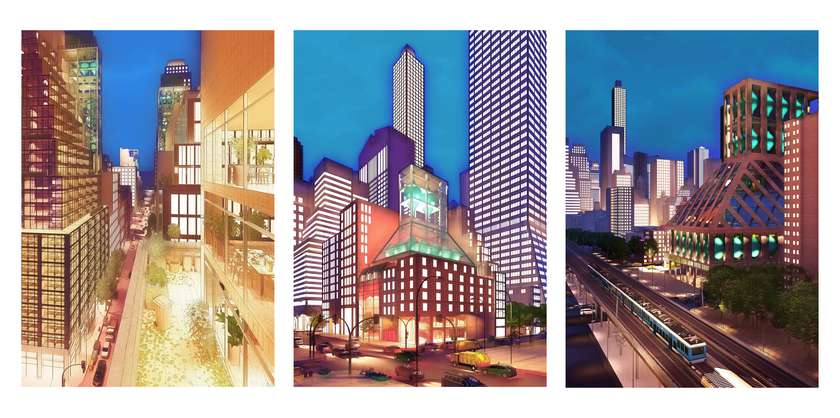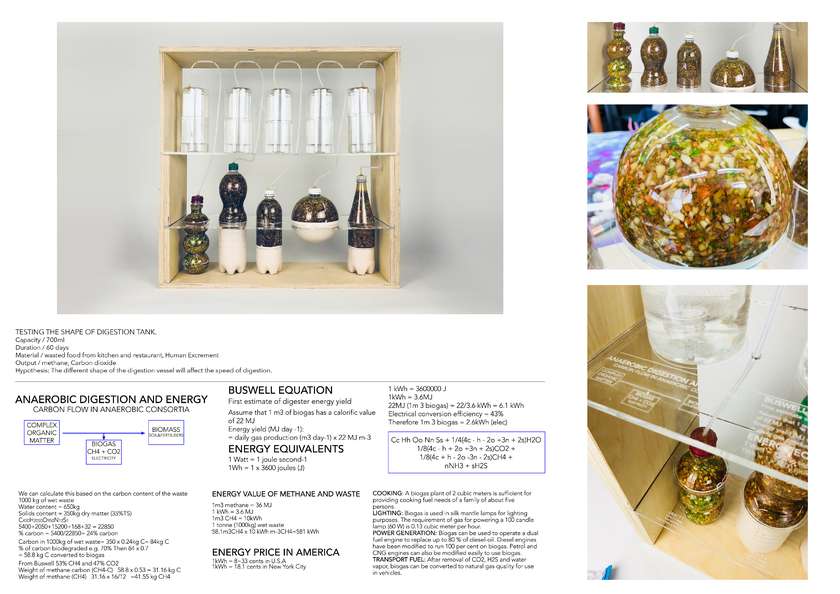Idea by
Chi-Jen, Wang
Call for ideas 2019
Parasitic Urbanism
Parasitic Urbanism

- Systemic changes
Saving our planet and city is not an option, it the only way that human can live longer. In 2017, roughly 50 percent of the products in the United States is thrown away. ($160 billion) Dramatically, it costs the city more than $2.5 billion to ships them to China or India. The alternative energy system engages with a ‘parasitic urbanism’ - envisaged as the architecture of an alternative biogas energy system in New York City. In this way, its buildings on the existing shift from traditional energy production to renewable sources (solar panels, biogas, etc.) Extensions are proposed to parasite the city in three different scales in different policy loophole. It operates as highrise building, street block and neighborhood scales, employing notions of air-rights to identify building offsets that become sites for biogas energy components. “If global food waste were a country, it would be the third largest emitter of greenhouse gases, just behind China and united states.” ROFF SMITH

The practice of carbon trading was implemented by the Kyoto Protocol (1992) and Paris Agreement (2016) as a strategy for tackling climate change, and it allows the city and business purchase the credits from elsewhere then growing as usual. Although the massive climate events are aggravating, the market seems to enlarge every year. It all because the trading system is hidden behind the scenes. Overexploitation, consumerism, and urbanism are hidden behind our perfect modern life in a distant.

Dealing with food waste is the easiest and quickest way to solve climate change.
The design using the rooftop and setback space to generate power, collecting food scrap and wastewater from the building, mix them in a digest tank through anaerobic digestion eventually transform the trash to power. The design interventions are highly visible/symbolic, exposing residents to the cycle of consumption and waste. The design interventions are correlated to the history of NYC and planning loopholes

Detail drawings show how does the system work.
Each biogas station correlated with a different context. The highrise building scale challenged how to best upgrade an existing building, the street block scale explored the air-right trading around the city, and how to create a carbon-zero community in the developed country. The neighborhood scale is investigating the possibility of using the vacant city-owned properties to generate electricity.

“When we picture the stuff that's hurting our planet, what do we think of? we think of smokestacks, cars, oil spills. we don't really think about all the food we throw away.”
The Kyoto Protocol will replace by the Paris Agreement in 2020. But, are we acting fast enough? Are we taking lessons from our Kyoto agreement? On 6 October 2017, the EPA issued a formal proposal to repeal the Clean Power Plan, A regulation to reduced domestic demand for coal, especially on the conventional power station.

Testing the shape of biogas digestion tank.
Parasitic Urbanism
Parasitic Urbanism

- Systemic changes
Saving our planet and city is not an option, it the only way that human can live longer. In 2017, roughly 50 percent of the products in the United States is thrown away. ($160 billion) Dramatically, it costs the city more than $2.5 billion to ships them to China or India. The alternative energy system engages with a ‘parasitic urbanism’ - envisaged as the architecture of an alternative biogas energy system in New York City. In this way, its buildings on the existing shift from traditional energy production to renewable sources (solar panels, biogas, etc.) Extensions are proposed to parasite the city in three different scales in different policy loophole. It operates as highrise building, street block and neighborhood scales, employing notions of air-rights to identify building offsets that become sites for biogas energy components. “If global food waste were a country, it would be the third largest emitter of greenhouse gases, just behind China and united states.” ROFF SMITH

The practice of carbon trading was implemented by the Kyoto Protocol (1992) and Paris Agreement (2016) as a strategy for tackling climate change, and it allows the city and business purchase the credits from elsewhere then growing as usual. Although the massive climate events are aggravating, the market seems to enlarge every year. It all because the trading system is hidden behind the scenes. Overexploitation, consumerism, and urbanism are hidden behind our perfect modern life in a distant.

Dealing with food waste is the easiest and quickest way to solve climate change.
The design using the rooftop and setback space to generate power, collecting food scrap and wastewater from the building, mix them in a digest tank through anaerobic digestion eventually transform the trash to power. The design interventions are highly visible/symbolic, exposing residents to the cycle of consumption and waste. The design interventions are correlated to the history of NYC and planning loopholes

Detail drawings show how does the system work.
Each biogas station correlated with a different context. The highrise building scale challenged how to best upgrade an existing building, the street block scale explored the air-right trading around the city, and how to create a carbon-zero community in the developed country. The neighborhood scale is investigating the possibility of using the vacant city-owned properties to generate electricity.

“When we picture the stuff that's hurting our planet, what do we think of? we think of smokestacks, cars, oil spills. we don't really think about all the food we throw away.”
The Kyoto Protocol will replace by the Paris Agreement in 2020. But, are we acting fast enough? Are we taking lessons from our Kyoto agreement? On 6 October 2017, the EPA issued a formal proposal to repeal the Clean Power Plan, A regulation to reduced domestic demand for coal, especially on the conventional power station.

Testing the shape of biogas digestion tank.